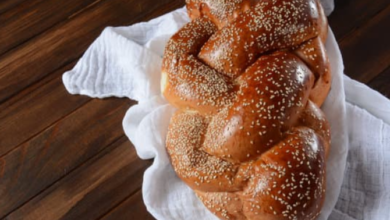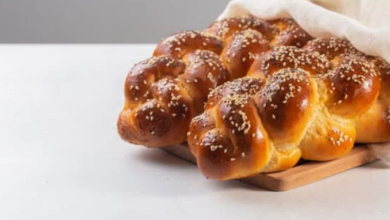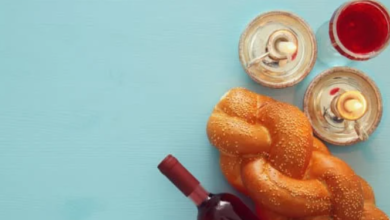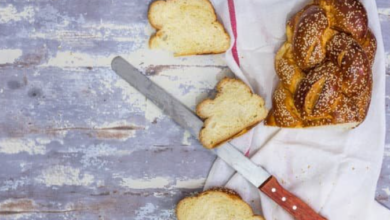Challah Vs. Milk Bread: Here’s What to Know

What To Know
- It is often enjoyed as a bread for sandwiches, French toast, or as a side dish with soups and stews.
- If you prefer a slightly sweet bread with a chewy texture and a distinctive shape, challah is a great option.
- Brioche is a French bread that is made with a higher percentage of butter and eggs than challah, resulting in a richer and more decadent flavor.
In the realm of baked delights, the debate between challah and milk bread has sparked countless discussions among bread enthusiasts. These two beloved loaves offer distinct characteristics and cater to different preferences. In this comprehensive guide, we delve into the intricacies of challah vs milk bread, exploring their ingredients, textures, flavors, and culinary uses to help you determine which loaf reigns supreme.
Ingredients and Origins
Challah:
- Originating from Jewish tradition, challah is a braided egg bread typically made with flour, water, yeast, sugar, salt, and eggs.
- The high egg content gives challah its distinctive golden-brown crust and rich, slightly sweet flavor.
Milk Bread:
- As its name suggests, milk bread incorporates milk into its dough.
- It is commonly made with flour, water, yeast, sugar, salt, milk, and sometimes butter or eggs.
- The milk adds a subtle tanginess and softness to the bread.
Texture and Appearance
Challah:
- Challah is known for its soft, slightly chewy texture.
- The braiding technique creates a visually appealing loaf with a distinctive shape.
- The crust is golden-brown and slightly crispy.
Milk Bread:
- Milk bread has a softer, more pillowy texture than challah.
- It is typically not braided and has a more uniform shape.
- The crust is softer and less crispy than challah’s.
Flavor and Versatility
Challah:
- Challah has a slightly sweet flavor with a hint of egg.
- It is often enjoyed as a bread for sandwiches, French toast, or as a side dish with soups and stews.
Milk Bread:
- Milk bread has a more neutral flavor, making it an excellent choice for a variety of culinary applications.
- It is perfect for sandwiches, toast, and as a base for pastries or sweet breads.
Culinary Uses
Challah:
- Challah is traditionally served on Jewish holidays and special occasions.
- It is a popular choice for French toast and bread pudding.
- Its slightly sweet flavor pairs well with savory dishes like sandwiches and soups.
Milk Bread:
- Milk bread is a versatile bread that can be used for a wide range of culinary purposes.
- It is often used for sandwiches, toast, and as a base for sweet pastries like cinnamon rolls.
- Its neutral flavor makes it a great accompaniment to both sweet and savory dishes.
Nutritional Value
Challah:
- Challah is a good source of protein and carbohydrates.
- It also contains some fiber, iron, and calcium.
Milk Bread:
- Milk bread has a similar nutritional profile to challah.
- It is a good source of carbohydrates and protein, with some fiber and calcium.
Which Bread to Choose?
The choice between challah and milk bread ultimately depends on your personal preferences and intended use.
- If you prefer a slightly sweet bread with a chewy texture and a distinctive shape, challah is a great option.
- If you are looking for a softer, more versatile bread with a neutral flavor, milk bread is a better choice.
The Verdict
Both challah and milk bread are delicious and versatile loaves that offer unique culinary experiences. Challah’s rich flavor and distinctive shape make it a perfect choice for special occasions or as a side dish. Milk bread’s neutral flavor and soft texture make it an excellent option for everyday use and a wide range of culinary applications.
Frequently Asked Questions
1. Is challah dairy-free?
- No, challah is not dairy-free as it contains eggs.
2. Can I substitute milk with water in milk bread?
- Yes, you can substitute milk with water in milk bread, but the bread will have a less rich and flavorful texture.
3. What is the difference between brioche and challah?
- Brioche is a French bread that is made with a higher percentage of butter and eggs than challah, resulting in a richer and more decadent flavor.
4. Can I use challah for French toast?
- Yes, challah is an excellent choice for French toast due to its slightly sweet flavor and ability to absorb liquid.
5. What is the best way to store challah and milk bread?
- Both challah and milk bread can be stored at room temperature for 2-3 days. For longer storage, they can be wrapped in plastic wrap and frozen for up to 2 months.





